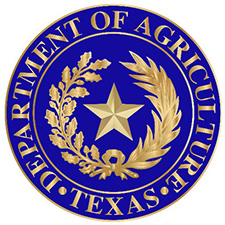After decades of decline, food’s share of personal spending holds steady
Since the turn of the century, Americans have spent roughly 10 percent of their disposable income on food each year, two decades of stability that may reflect a leveling-off of U.S. incomes, say two USDA economists. Their analysis provides context to the frequent boast by farm and food industry leaders, often joined by government officials, that Americans enjoy the safest and most affordable food supply in the world.
Keep food flowing during pandemic, FAO urges G20
World leaders must remain vigilant to keep food trade flowing during the pandemic and to continue using trade as a lever to improve farm income and productivity, said the head of the UN Food and Agriculture Organization on Sunday. Speaking during the Group of 20 summit held online, director general Qu Dongyu said, “It is essential for the G20 to keep working on preventing this health crisis from becoming a global food crisis.”
TODAY’S QUICK HITS
Smaller processors struggle with coronavirus: Workers and advocates say smaller poultry processors have struggled just as much as the big processors, “often taking longer to implement fewer safety measures than their larger counterparts.” (Facing South)
Lobster industry hopes for end of chaos: Lobster fisherman and processors in New England hope for stability under President-elect Biden after the upheavals of trade war, heavy tariffs and a severe loss of exports during the Trump administration. (Associated Press)
Climate change in the cranberry bog: Hotter summers and warmer winters with less ice, along with wild fluctuations between drought and heavy rainfall — all stemming from climate change — are taking a toll on cranberry plants in Massachusetts, which grows a quarter of the U.S. crop. (Washington Post)
Small farmers okay with smaller turkeys: Small-scale organic and free-range turkey farmers may be faring a bit better this year, despite forecasts of fewer and smaller Thanksgiving dinners, because of a loyal customer base. (Harvest Public Media)
California wildfire kills hundreds of sequoias: The monster Castle wildfire in August burned portions of 20 groves of giant sequoia trees on the western slopes of the Sierras, with a toll that could top 1,000 of the ancient trees. (Los Angeles Times)
ON THE CALENDAR
Monday
USDA releases quarterly Outlook for U.S. Agricultural Trade, 3 p.m. ET. In August, the USDA forecast exports of 140.5 billion, which would be a 3-percent increase from the fiscal 2020 total of $135.9. The USDA has projected soybean exports will recover from the Sino-U.S. trade war this fiscal year and exceed 2 billion bushels for the first time since fiscal 2018, when the trade war began.
USDA releases monthly Food Price Outlook, noon ET. At present, the USDA forecasts food inflation of 3 percent this year, compared to the 20-year average of 2 percent, and dropping to a more-normal 2.5 percent in 2021.
USDA releases Cotton and Wool Yearbook, noon ET.
USDA releases monthly Cold Storage report, 3 p.m. ET.
USDA issues weekly Crop Progress report, 4 p.m. ET.
Tuesday
President Trump is expected to conduct the annual “pardoning” of the Thanksgiving turkey, a White House tradition that began with President Truman.
Thursday
Thanksgiving Day, a holiday that began during colonial times as a harvest feast and became a national holiday by proclamation of President Lincoln in 1863 during the Civil War, “to heal the wounds of the nation” and commend care of “widows, orphans, mourners or sufferers in the lamentable civil strife.” Lincoln chose the final Thursday of November. President Franklin Roosevelt advanced it by a week in 1939 to spur the economy during the Depression. Congress passed a law in 1941 setting Thanksgiving on the fourth Thursday of November. The American celebration of Thanksgiving as a response to the fall harvest “falls under a category of festivals that spans cultures, continents and millennia,” says History.com. “Historians have noted that Native Americans had a rich tradition of commemorating the fall harvest with feasting and merrymaking long before Europeans set foot on their shores.”
The UN Food and Agriculture Organization releases the 2020 edition of its flagship State of World Food and Agriculture report, Rome.
International Grains Council releases monthly Grain Market Report, London.











